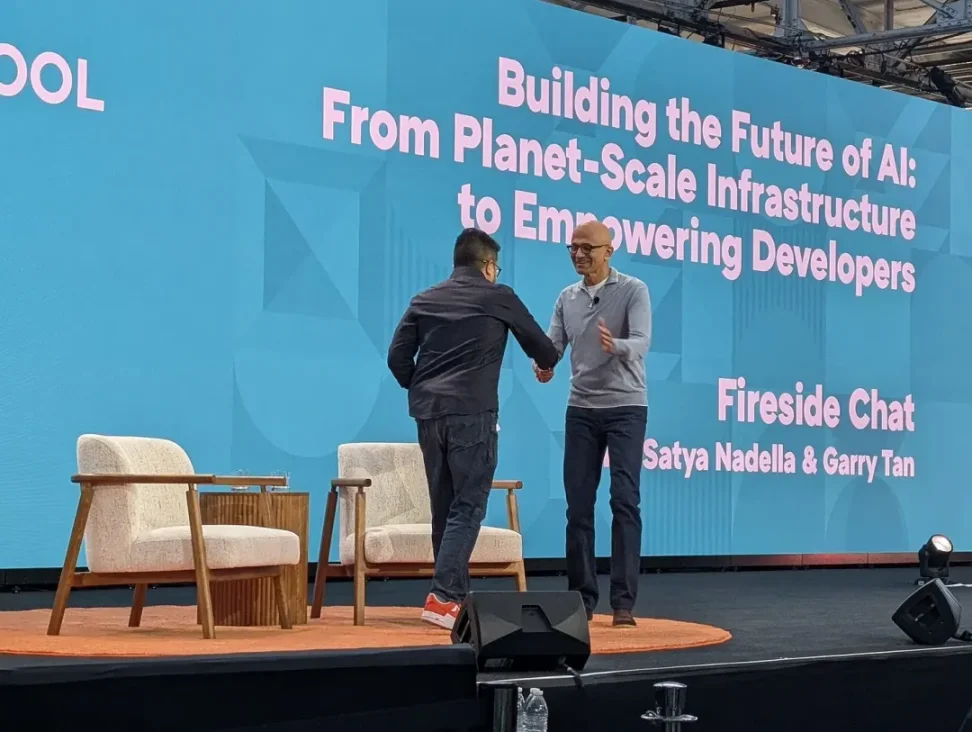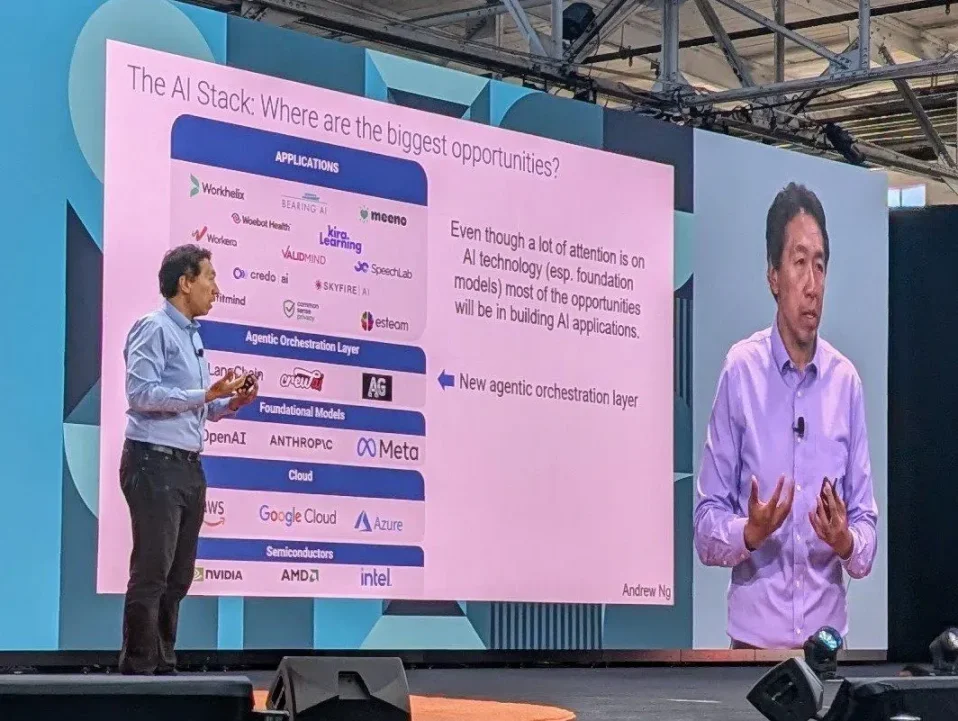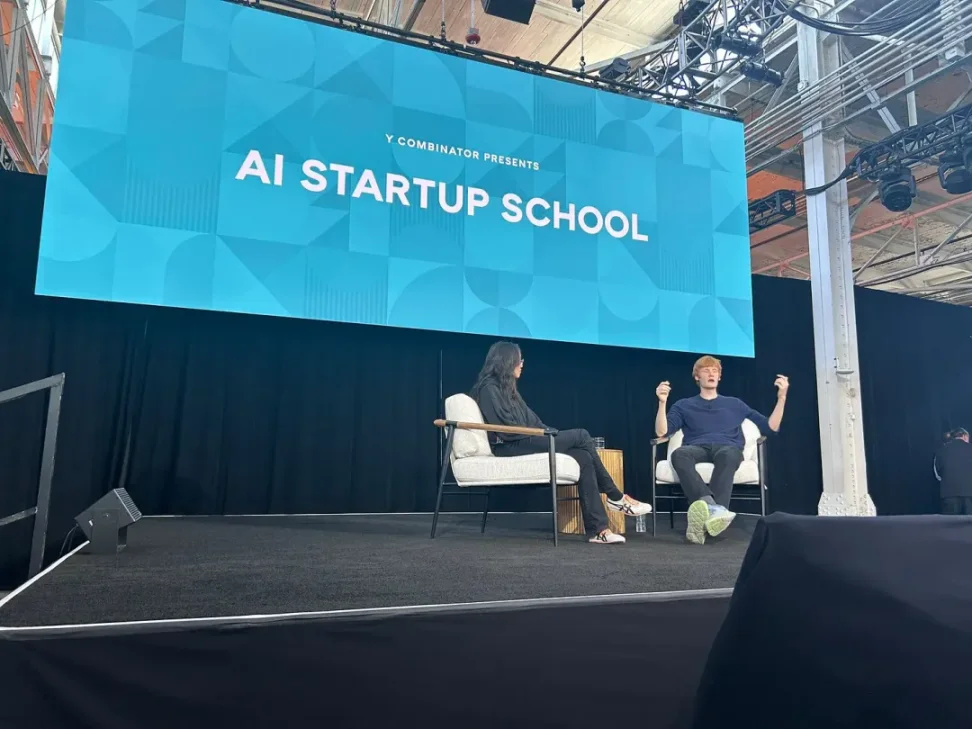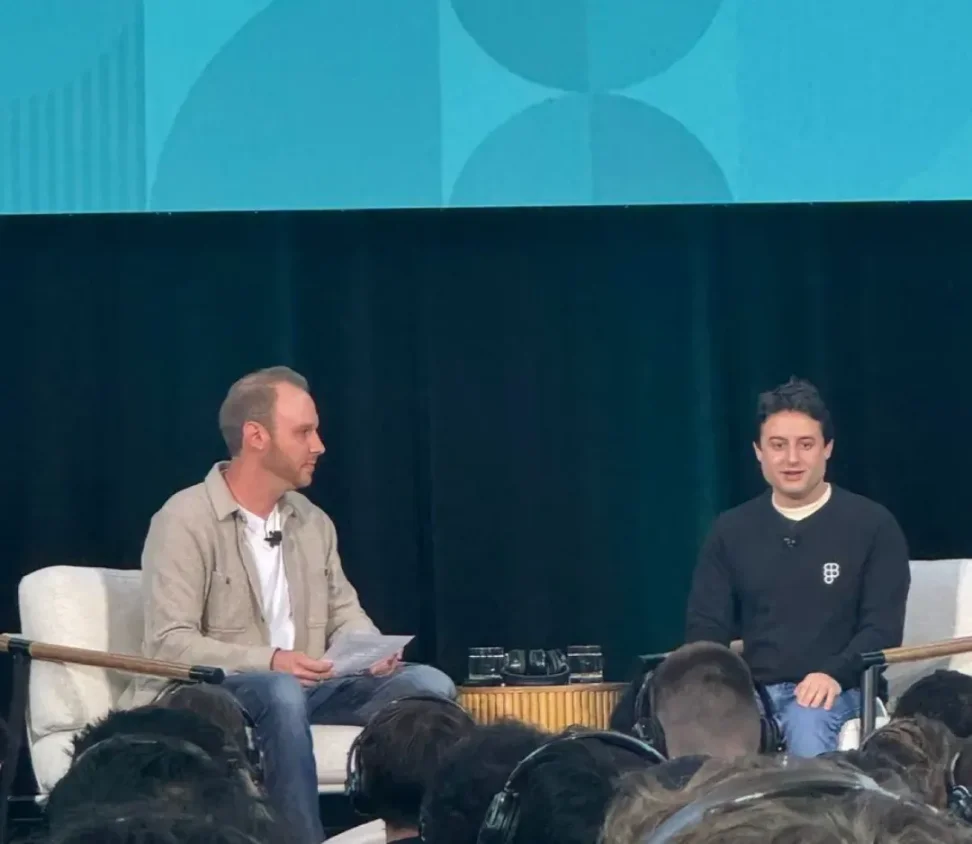The best use of AI is to improve iteration speed, rather than pursuing the "magic" of one-click generation.
Compiled by: Founder Park
On the second day of the YC AI Startup School, seven heavyweight guests were welcomed, including Satya Nadella (Microsoft CEO), Andrew Ng (Founder of Deep Learning.AI), Chelsea Finn (Co-founder of Physical Intelligence), Michael Truell (CEO & Co-founder of Cursor), Dylan Field (CEO & Co-founder of Figma), Andrej Karpathy (former AI Director at Tesla), and Sriram Krishnan (Senior AI Policy Advisor at the White House).
These industry leaders shared many insightful viewpoints during their speeches on topics such as AI technology and entrepreneurship, including:
- Do not anthropomorphize AI. AI is not human; it is a tool. The next frontier is to give it memory, tools, and the ability to take action, but this is fundamentally different from human reasoning.
- In the future, agents will become the new generation of computers. This future depends not only on the precision of technology but also on user trust and seamless interaction experiences.
- Products that include feedback loops, such as Agentic AI, perform far better than tools that can only complete tasks "once." Continuous interaction can optimize outcomes, while iteration can lead to compounded performance improvements.
- The speed of building prototypes has increased tenfold, and the efficiency of developing production-grade software has improved by 30-50%. This advantage should be leveraged to reduce market risks through real-time user feedback.
- Code is no longer a scarce core asset as it once was. With rapid prototyping tools and AI, code can be easily produced. What truly matters is the value that the code delivers.
- Real-world data is irreplaceable. While synthetic and simulated data can be helpful, real data remains crucial, especially for complex visual and physical tasks.
- The best use of AI is to improve iteration speed, rather than pursuing the "magic" of one-click generation. Designers and product managers must now contribute to AI assessments.
In addition to Andrej Karpathy (for details on Andrej Karpathy's speech, see our article yesterday titled "On the First Day of YC AI Startup School, Andrej Karpathy's Speech Went Viral") and Sriram Krishnan, we have compiled the core viewpoints from the other five guests.
Microsoft CEO: Satya Nadella

The compound effect of platforms: AI does not appear out of thin air; it is built on decades of cloud infrastructure that has evolved to support large-scale model training. Each generation of platforms lays the groundwork for the next.
Models are infrastructure; products are ecosystems: Foundational models serve as infrastructure, similar to new SQL databases. The real product is not the model itself but the entire ecosystem built around it: feedback loops, tool integration, and user interaction.
Economic impact is the benchmark: Satya measures the value of AI with the guiding star metric: "Is it creating economic surplus?" If a technology cannot drive GDP growth, it is not transformative.
The boundary between computing power and intelligence: The level of intelligence grows logarithmically with the investment in computing power. However, future breakthroughs will not come solely from scale but from paradigm shifts, akin to the arrival of the next "scale law moment."
Energy and social consensus: The large-scale development of AI will require more energy consumption and societal permission. To gain this permission, we must demonstrate that the real, positive social benefits of AI match its costs.
The true bottleneck of AI is change management: The barriers to development in traditional industries are not technological but are constrained by inherent workflows. True transformation requires rethinking how work is done, not just simply introducing AI.
The merging of job roles: In platforms like LinkedIn, traditional roles such as design, front-end, and product are gradually merging, giving rise to "full-stack" talent. AI is enabling more people to acquire interdisciplinary skills, accelerating this trend.
Do not underestimate the value of repetitive work: In knowledge work, there is a significant amount of repetitive manual labor. The best application of AI is to eliminate this "invisible friction cost" and free human creativity.
Stay open to the future: Even Satya himself did not foresee the rapid advancements in "computing during testing" and "reinforcement learning" technologies. Do not assume we have seen the final form of AI; there are likely more breakthroughs ahead.
Do not anthropomorphize AI: AI is not human. It is a tool. The next frontier is to give it memory, tools, and the ability to take action, but this is fundamentally different from human reasoning.
The future of development: AI will not replace developers but will become their powerful assistant. VSCode is a canvas for collaboration with AI. The core of software engineering will shift from writing code to system design and quality assurance.
Responsibility and trust are indispensable: The emergence of AI does not absolve humans of responsibility. Companies still need to be legally accountable for the behavior of their products. This is why privacy, security, and sovereignty must remain central.
Trust comes from practical value: Trust comes from practicality, not from flowery language. Satya pointed out that the chatbot deployed for Indian farmers is an example, highlighting that visible assistance is the cornerstone of building trust.
From voice to agents: Microsoft's AI journey began with voice technology in 1995. Today, its strategic focus has shifted to fully functional "agents" that integrate voice, vision, and ubiquitous environmental computing devices.
Agents are the future of computing: Satya's long-term vision is: "Agents will become the new generation of computers." This future depends not only on the precision of technology but also on user trust and seamless interaction experiences.
Insights on leadership: His advice is to start from the grassroots level but to have the grandest ambitions. Learn how to build a team, not just develop a product.
The type of person Satya is looking for: He values individuals who simplify complexity and bring clarity; who energize teams and unite people; and who are eager to solve complex problems under stringent constraints.
Favorite interview question: "Tell me about a problem you once didn't know how to solve and how you solved it." He hopes to see the candidate's curiosity, adaptability, and perseverance from this.
The potential of quantum computing: The next disruptive technology may come from the quantum realm. Microsoft is focusing on the development of "error-correcting qubits," which may enable us to simulate the natural world with unparalleled precision.
Advice for young people: Do not wait for permission from others. Go build tools that empower people genuinely. He often reflects: "What can we create to help others create?"
Favorite products: VSCode and Excel—because they empower people with superpowers.
Founder of Deep Learning.AI: Andrew Ng

Execution speed determines success: The best indicator of whether a startup will succeed is the speed of building, testing, and iterating. Speed brings a compounding effect of learning, and AI makes this effect exponential.
Most opportunities lie at the application layer: The greatest gains currently come not from building new models but from applying existing models to valuable, user-facing scenarios. This is where founders should focus.
Agentic AI outperforms "one-time" tools: Products that include feedback loops, such as Agentic AI, perform far better than tools that can only complete tasks "once." Continuous interaction can optimize outcomes, while iteration can lead to compounded performance improvements.
The "orchestration layer" is emerging: A new intermediate layer is forming between foundational models and applications: agent-based orchestration. This layer can support complex multi-step tasks across tools and data sources.
The more specific the idea, the faster the execution: The best way to take quick action is to start with a specific idea, one detailed enough for engineers to begin building immediately. Good specific ideas often come from domain experts with intuitive clarity.
Beware of the trap of "grand narratives": Abstract goals like "AI empowering healthcare" sound ambitious but often lead to slow execution. What truly brings efficiency are specific tools like "MRI appointment automation."
Be willing to pivot, provided you take the right first step: If early data shows your idea is not working, a concrete initial plan will make it easier to pivot. Clearly understanding what you are testing allows for a quick shift in direction after failure.
Use feedback loops to mitigate risks: The speed of building prototypes has increased tenfold, and the efficiency of developing production-grade software has improved by 30-50%. This advantage should be leveraged to reduce market risks through real-time user feedback.
Try more, rather than pursue perfection: Do not try to perfect your first version. Build 20 rough prototypes and see which one sticks. The speed of learning is more important than polishing.
Act quickly and take responsibility: Andrew Ng redefined the classic Silicon Valley mantra: do not "act quickly and break the mold," but "act quickly and take responsibility." A sense of responsibility is the cornerstone of building trust.
Code is losing its scarce value: Code is no longer a scarce core asset as it once was. With rapid prototyping tools and AI, code can be easily produced. What truly matters is the value that the code delivers.
Technical architecture is reversible: In the past, choosing an architecture was a one-way decision. Now it is a two-way door, and the cost of changing architectures has significantly decreased. This flexibility encourages bolder experimentation and faster trials.
Everyone should learn to code: The argument against learning to code is misleading. Similar concerns arose when transitioning from assembly language to high-level languages. AI is lowering the barrier to programming, and more people in the future should master coding skills.
Domain knowledge enhances AI: A deep understanding of a specific domain allows you to better leverage AI. Art historians can write better image prompts. Doctors can shape better health AI. Founders should combine domain knowledge with AI literacy.
Product managers are now the bottleneck: Currently, the new constraint is not engineering but product management. One of Andrew Ng's teams even suggested adjusting the ratio of product managers to engineers to 2:1 to accelerate feedback and decision-making processes.
Engineers need product thinking: Engineers with product intuition act faster and develop better products. Technical skills alone are not enough; developers also need a deep understanding of user needs.
Get feedback as quickly as possible: Andrew Ng advocates for the speed hierarchy (from fastest to slowest): internal dogfooding (self-testing the product) -> seeking friends' opinions -> asking strangers -> small-scale release to a thousand users -> conducting global A/B testing. Entrepreneurs should climb this path as quickly as possible.
Deep AI knowledge remains a moat: AI literacy has not yet become widespread. Those who truly understand the principles of AI technology still hold a significant advantage—they can innovate in smarter, more efficient, and more autonomous ways.
Hype ≠ Truth: Be wary of narratives that sound impressive but are primarily used for fundraising or enhancing status. Terms like AGI, extinction, and infinite intelligence are often signals of hype rather than influence.
Safety is about usage, not the technology itself: The concept of "AI safety" is often misunderstood. AI, like electricity or fire, is neither good nor bad in itself; it depends on how it is applied. Safety is about usage, not the tool itself.
The only thing that matters is whether users love it: There is no need to overly fixate on model costs or performance benchmarks. The only question that needs to be addressed is: Are you creating a product that users truly love and are willing to continue using?
Educating AI is still in the exploratory phase: Companies like Kira Learning are conducting numerous experiments, but the ultimate form of AI in education remains unclear. We are still in the early stages of transformation.
Beware of "doomsday" narratives and "regulatory capture": Excessive fear of AI is being used to justify regulations that protect existing businesses. Be skeptical of "AI safety" narratives that benefit those already in power.
Co-founder of Physical Intelligence: Chelsea Finn

Robotics requires a full-stack mindset: You cannot just add robotics to an existing company. You need to build the entire tech stack from scratch—data, models, deployment.
Data quality trumps quantity: Massive datasets from industries, YouTube, or simulated environments often lack diversity and authenticity. Correct, high-quality data is more important than scale.
The best model: Pre-training + fine-tuning: Pre-train on a broad dataset and then fine-tune with about 1,000 high-quality, context-consistent samples; this approach can significantly enhance robotic performance.
General-purpose robots will surpass specialized ones: General models that can span different tasks and hardware platforms (like third-party robots) are proving to be more successful than systems built for specific purposes.
Real-world data is irreplaceable: While synthetic and simulated data can be helpful, real data remains crucial, especially for complex visual and physical tasks.
Too many resources can be counterproductive: Over-funding or over-complicating things can slow progress. Clarity of the problem and focused execution are most important.
CEO & Co-founder of Cursor: Michael Truell

Start early and keep building: Even when partners dropped out, Michael continued programming. Early viral spread (a Flappy Bird clone) helped him build confidence and skills.
Quickly validate, even in unfamiliar fields: Their team built a programming assistant in mechanical engineering without prior experience. Their motto is "learn by doing."
Differentiated positioning, no fear of giants: They hesitated to compete with GitHub Copilot but later realized that few companies aimed for "end-to-end development automation." This positioning opened up the market for them.
Act quickly from code to release: From the first line of code to public release, they only took 3 months. Rapid iteration helped them quickly calibrate the product direction.
Focus beats complexity: They decisively abandoned plans to develop both an IDE (integrated development environment) and AI tools simultaneously. Focusing on AI functionality itself led to faster development.
Distribution can start with a tweet: Cursor's early user growth stemmed from a tweet by the co-founder on social media. Word-of-mouth was the main driver before formal market promotion.
The compounding effect of execution: In 2024, Cursor's annual recurring revenue grew from $1 million to $100 million in one year, achieving a 10% weekly compound growth driven by product improvements and user demand.
Best advice: Follow your curiosity: Forget about things done to beautify your resume. Michael's main advice is to do what interests you with smart people.
CEO & Co-founder of Figma: Dylan Field

Find a co-founder who inspires you: Dylan's motivation comes from working with his co-founder Evan Wallace, "It feels like creating the future every week."
Start early and learn by doing: Dylan started his entrepreneurial project at 19 while still in college. Early failures, like the "meme generator," ultimately honed the great idea that became Figma.
Release quickly, get feedback faster: They contacted early users via email for rapid iteration and insisted on charging from the start. Feedback is the continuous driving force behind product evolution.
Break down long-term roadmaps into short-term sprints: Decomposing grand visions into smaller parts is key to ensuring speed and execution.
Product-market fit may take years: Figma took five years to receive a decisive signal: Microsoft stated that if Figma did not start charging, they would have to cancel the partnership.
Design is the new differentiator: He believes that due to the rise of AI, design is becoming increasingly important. Figma is also launching a series of new products like Draw, Buzz, Sites, and Make to align with this trend.
Use AI to accelerate prototyping: The best use of AI is to improve iteration speed, rather than pursuing the "magic" of one-click generation. Designers and product managers must now contribute to AI assessments.
Embrace rejection rather than avoid it: Childhood performance experiences taught Dylan to face criticism and feedback calmly. He believes that being rejected is part of the path to success.
Human connection is always core: He warns against replacing interpersonal relationships with AI. When asked about the meaning of life, he replied: "Explore consciousness, keep learning, and share love."
免责声明:本文章仅代表作者个人观点,不代表本平台的立场和观点。本文章仅供信息分享,不构成对任何人的任何投资建议。用户与作者之间的任何争议,与本平台无关。如网页中刊载的文章或图片涉及侵权,请提供相关的权利证明和身份证明发送邮件到support@aicoin.com,本平台相关工作人员将会进行核查。




